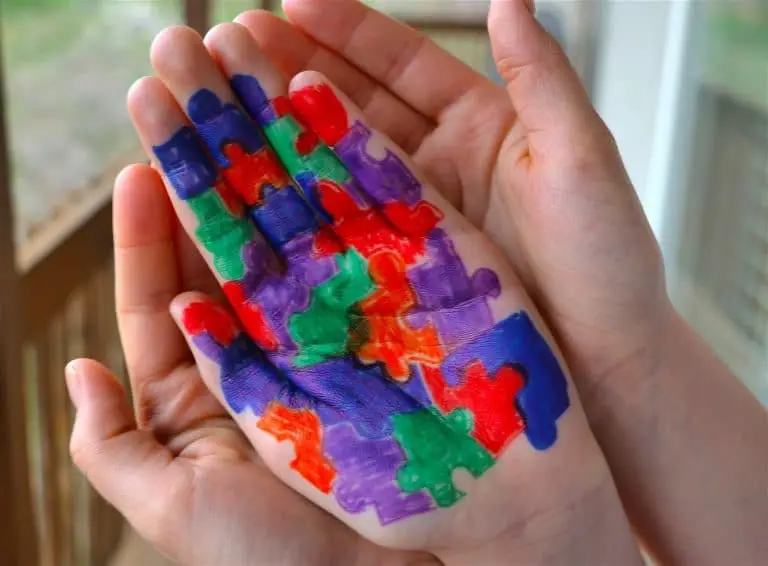
Core Components of Adaptive Behavior Services
According to the American Medical Association (AMA) CPT codebook, adaptive behavior services consist of several foundational components. These ensure comprehensive assessments and targeted treatments that meet patient-specific needs:
- Functional Behavior Assessment (FBA) : A descriptive procedure that identifies environmental events preceding and following target behaviors. FBAs uncover the factors influencing behaviors, providing actionable insights for designing effective interventions.

- Functional Analysis (FA) : Functional analysis takes things a step further by systematically evaluating how specific environmental factors affect behaviors. Through repeated observations, practitioners pinpoint triggers and patterns, which helps them create more precise strategies to address problematic behaviors.
- Standardized Instruments and Procedures : These tools provide consistent, measurable data to evaluate behaviors.
-
- Vineland Adaptive Behavior Scales
- Brigance Inventory of Early Development
- Pervasive Developmental Disabilities Behavior Inventory
- Non-Standardized Instruments and Procedures : No standardized instruments and procedures include but are not limited to,
-
- Curriculum-referenced evaluations
-
- Stimulus preference assessments
-
- Other tailored methods to address individual patient needs
- Applied Behavior Analysis (ABA) Therapy : A structured, evidence-based approach that reinforces positive behaviors and skills, particularly for individuals with developmental disorders such as autism.
Key Concepts and Comparisons
Applied Behavior Analysis vs. Occupational Therapy
ABA focuses on modifying behavior through reinforcement techniques, making it especially effective for children with autism. Occupational therapy, on the other hand, helps individuals develop or recover skills for daily living and work.
When combined, ABA and occupational therapy create a powerful blend that addresses adaptive behaviors in a variety of settings, enhancing overall development.

Cognitive Behavioral Therapy vs. Applied Behavior Analysis
While both CBT and ABA center on behavioral improvements, their approaches are quite different. CBT focuses on reshaping thought patterns to change behaviors and emotions. In contrast, ABA uses reinforcement strategies to directly shape behavior. Think of CBT as working from the inside out (thoughts influence actions) and ABA as working from the outside in (actions influence overall behavior).
What is Applied Behavior Analysis Therapy?

CPT Codes Frequently Asked Questions
Which Categories Of Cpt Codes Pertain To Adaptive Behavior?
Which Codes Are Used For Adaptive Behavior Assessment?
- CPT code 97151 covers the analysis of pertinent past data, including medical diagnosis.
- CPT code 97152 refers to procedures performed by a technician under the direction of a physician or other qualified healthcare professional.
- CPT code 0362T must be administered by a physician or other qualified healthcare professional who is on-site, with the assistance of two or more technicians.
Are These Codes Approved For Telehealth Services?
What Is The Difference Between Cpt CodeDs 97152 And 0362t?
- administered by the physician or other qualified healthcare professional who is on-site (but may not necessarily meet face-to-face with a patient)
- with the assistance of two or more technicians.
- for a patient with destructive behavior that requires the presence of a team.
- completion in an environment that is customized to the patient’s behavior.
Which Codes Are Used In Adaptive Behavior Treatment?
What Is Applied Behavior Analysis (ABA) and How Does It Pertain to Adaptive Behaviors?
What Are Some Common Mistakes Made In Adaptive Behavior Services Medical Coding?
Where Can I Get Help With Medical Billing And Coding For My Practice?
Types of CPT Codes
Adaptive behavior services are spread out across two different categories in the AMA CPT codebook:
Category I (permanent codes)
Category III (temporary codes for emerging technology).
These are intended to be used for data collection to substantiate widespread usage. Once the sunset date is reached, the CPT code may either be moved to Category I or remain as Category III with a revised sunset date.
These codes are essential for autism physician billing and ensuring compliance with CMS and other third-party payers.
Adaptive Behavior Assessment
Under the adaptive behavior assessment category, there are two CPT codes from Category I and one from Category III.
| CPT Code 97151 | Behavior Identification Assessment (CPT Code 97151) This code covers behavior identification assessments conducted by a physician or other qualified healthcare professional. Each 15-minute increment includes face-to-face time with the patient and/or their guardian(s)/caregiver(s) for administering assessments, discussing findings, and making recommendations. It also accounts for non-face-to-face activities such as analyzing past data, scoring, interpreting results, and preparing the treatment plan. As specified in the CPT guidelines, these assessments must be administered by a physician or licensed supervisor. However, supporting assessments can be designed by the licensed supervisor and carried out by a treatment therapist. |
To ensure smooth operations, it’s essential that all performing physicians maintain up-to-date credentials and certifications. Neolytix offers comprehensive medical credentialing services to alleviate this administrative burden, ensuring your practice stays compliant and efficient.
Key Details:
- Maximum reportable units per day: 8 (equivalent to two hours of service)
- Appropriate diagnosis codes include ASH, head trauma, impaired social skills and communication, developmental disabilities (e.g., physical, learning, language disorders), and more.
| CPT Code 97152 | Behavior Identification Supporting Assessment (CPT Code 97152) This code is used for assessments conducted by a technician under the supervision of a physician or other qualified healthcare professional. Each 15-minute increment involves face-to-face interaction with the patient. Like CPT 97151, this code also includes the physician’s or healthcare professional’s interpretation of results and may involve functional behavior assessments, functional analyses, and other structured or standardized tools to evaluate adaptive and maladaptive behaviors. As specified in the CPT guidelines, these assessments must be administered by a physician or licensed supervisor. However, supporting assessments can be designed by the licensed supervisor and carried out by a treatment therapist. |
Behavior Identification Supporting Assessment (CPT Code 0362T) CPT Code 0362T has specific requirements:
- Must be administered by a physician or other qualified healthcare professional on-site (though not necessarily face-to-face).
- Requires the assistance of at least two technicians.
- Applies to patients exhibiting destructive behaviors that necessitate a team-based approach.
Must take place in an environment customized to the patient’s specific behavioral needs.
Key Distinctions:
- CPT Code 0362T addresses destructive behaviors, while CPT Code 97152 is focused on deficient adaptive behaviors.
- The number of technicians involved is a major differentiator between the two codes.

Note: Accurate and thorough medical documentation is critical when determining which CPT codes to use. If your practice needs support with EMR template development or other documentation processes, Neolytix is here to help.
For more, consult the latest edition of the Adaptive Behavior Assessment System.
Summary Chart: Adaptive Behavior Assessment and Treatment Code Conversion Table
| CPT Code | Description |
| 97154 | Group adaptive behavior treatment by protocol, administered by a technician under the direction of a physician. |
| 97156 | Family adaptive behavior treatment guidance, administered by a physician or other qualified health care professional. |
CPT Code |
Description |
Time |
Notes |
Telehealth Approved |
|---|---|---|---|---|
|
97151 |
Behavior identification assessment, administered by a physician or other qualified health care professional, each 15 minutes of the physician’s or other qualified health care professional’s time face-to-face with patient and/or guardian(s)/caregiver(s) administering assessments and discussing findings and recommendations, and non-face-to-face analyzing past data, scoring/interpreting the assessment, and preparing the report/treatment plan |
Per 15 mins |
Performed by a physician or other qualified healthcare professional.
|
Yes |
|
97152 |
Behavior identification–supporting assessment, administered by one technician under the direction of a physician or other qualified healthcare professional, face-to-face with the patient, each 15 minutes |
Per 15 mins |
Performed by technician under the direction of a physician or other qualified healthcare professional.
|
Yes |
|
0362T |
Behavior identification supporting assessment, each 15 minutes of technician’s time face-to-face with a patient |
Per 15 mins |
Performed by technician under the direction of a physician or other qualified healthcare professional.
|
Yes |

Adaptive Behavior Treatment
Adaptive behavior treatment builds upon the findings of an adaptive behavior assessment, focusing on targeted goals and tailored interventions. These services aim to reduce repetitive and maladaptive behaviors while enhancing communication and social functioning.
Treatment sessions vary in structure, one-on-one, group, or family, and CPT codes reflect these differences. Accurate medical records must detail the session type, including the number of technicians involved and any protocol modifications. If this information is missing, the default assumption is that treatment followed a set protocol, administered by a single technician under a qualified healthcare professional’s supervision.
A hallmark of adaptive behavior treatment is breaking tasks into small, measurable steps. Each skill is practiced in isolation until mastered, ensuring lasting progress. Providers may conduct additional assessments to refine treatment strategies when necessary, ensuring care remains adaptive and effective.
Treatment = describe services that address specific treatment targets and goals based on the results of the previous assessment; includes ongoing assessment and adjustment of treatment protocols, targets, and goals. |
|||
|---|---|---|---|
CPT Code |
Description |
Time |
Telehealth Approved |
|
97153 |
Adaptive behavior treatment by protocol, administered by a technician under the direction of a physician or other qualified health care professional, face-to-face with one patient, each 15 minutes |
Per 15 mins |
Yes |
|
97155 |
Adaptive behavior treatment with protocol modification, administered by a physician or other qualified health care professional, which may include simultaneous direction of technician, face-to-face with one patient, each 15 minutes |
Per 15 mins |
Yes |
|
0373T |
Adaptive behavior treatment with protocol modification, each 15 minutes of technician’s time face-to-face with a patient |
Per 15 mins |
Yes |
Group = face-to-face with multiple patients at the same time |
|||
|
97154 |
Group adaptive behavior treatment by protocol, administered by a technician under the direction of a physician or other qualified health care professional, face-to-face with two or more patients, each 15 minutes |
Per 15 mins |
Yes |
|
97158 |
Group adaptive behavior treatment with protocol modification, administered by physician or other qualified health care professional, face-to-face with multiple patients, each 15 minutes |
Per 15 mins |
Yes |
Family = face to face with guardian(s)/caregiver(s) |
|||
|
97156 |
Family adaptive behavior treatment guidance, administered by physician or other qualified health care professional (with or without the patient present), face-to-face with guardian(s)/caregiver(s), each 15 minutes |
Per 15 mins |
Yes |
|
97157 |
Multiple-family group adaptive behavior treatment guidance, administered by physician or other qualified health care professional (without the patient present), face-to-face with multiple sets of guardians/caregivers, each 15 minutes |
Per 15 mins |
Yes |
|
97158 |
Group (2+ people) adaptive behavior treatment guidance, administered by physician or other qualified healthcare professional (without the patient present), face-to-face with multiple sets of guardians/caregivers, each 15 minutes |
Per 15 mins |
Yes |
Applied Behavior Analysis
Applied Behavior Analysis (ABA) is a transformative approach designed to cultivate adaptive behaviors, particularly in individuals on the autism spectrum. Grounded in the science of psychology and the principles of human learning, ABA explores how environmental factors shape behavior, paving the way for meaningful change.
By applying these principles in real-world contexts, ABA encourages positive behaviors while reducing those that are harmful or counterproductive. Its impact on individuals with autism is profound, offering a structured framework for learning and growth.
ABA therapy delivers remarkable benefits, including:
- Enhancing language and communication skills
- Strengthening attention span, focus, and memory
- Fostering social interactions and collaboration
- Improving academic performance and problem-solving abilities
The methodologies of ABA have been meticulously refined over decades. Since the mid-1960s, therapists have used ABA to empower individuals with autism and related developmental disorders, helping them achieve significant milestones in their personal and social lives.
It is important to note that while ABA is highly effective, it is not the sole treatment option for autism. Contrary to common misconceptions, ABA therapy and general autism therapy are distinct. Each serves unique purposes and should be considered as part of a comprehensive, personalized care plan.

Common Coding Mistakes in ABA Therapy
Understanding and avoiding common coding mistakes can streamline reimbursement and improve the overall efficiency of practice operations. Here are key pitfalls to watch for:
- Insufficient Documentation : Accurate and detailed documentation is the backbone of successful coding. Without the required information, claims may be denied or underpaid. Essential elements include:
- Type of Service: Specify whether the service was an assessment or treatment.
- Medical Necessity: Clearly outline the patient’s diagnosis and the necessity of the service.
- Session Details: Document time spent with the patient and the number of technicians involved.
- Time spent with patients.
- Number of technicians.
- Behavioral Focus: Clearly identify deficient adaptive behaviors or destructive behaviors addressed during the session.
- Inadequate Insurance Verification : Insurance policies and coverage for ABA services vary significantly. Failing to verify eligibility or obtain necessary authorizations for certain Category III CPT codes can result in claim denials. Always confirm:
- Patient eligibility
- Authorization requirements for specific procedures
- Coverage limitations on telehealth services
- Incorrect CPT Code Assignment : Using incorrect codes can lead to upcoding, downcoding, or outright rejections. Ensure your coding team:
- Is well-versed in current AMA CPT updates.
- Understands the specific requirements for codes like 97151 (behavior identification assessment) or 97153 (adaptive behavior treatment).
- Reviews the service location to apply the correct Place of Service codes.
- Overlooking Medically Unlikely Edits (MUEs) : Medically Unlikely Edits are limits set by CMS on the number of units billable for a service. Submitting claims that exceed these thresholds without proper documentation can trigger denials. Carefully review:
- The total number of units billed
- Supporting documentation to justify exceeding MUE limits when necessary
- Ignoring National Correct Coding Initiative (NCCI) Edits Failing to account for NCCI edits can result in bundled services being unbundled incorrectly, leading to compliance issues. Avoid these errors by:
- Reviewing relationships between multiple procedures performed during a single visit
- Ensuring codes are bundled appropriately
By addressing these common mistakes, providers can optimize their revenue cycle and focus on delivering quality care. Leveraging expert billing support, such as services offered by Neolytix, can further ensure compliance, reduce errors, and improve financial outcomes for ABA therapy practices.

Reimagine Revenue Management with Neolytix

Take the first step today. Contact Neolytix to schedule your free consultation and transform the future of your practice.
Schedule A Free Consultation
"*" indicates required fields
Other FAQs
Adaptive behavior services are spread out across two categories in the AMA CPT codebook: category I (medicine section) and category III (temporary codes for emerging technology). As of January 2024, there are 8 category-I CPT codes and 2 category-III CPT codes pertaining to adaptive behavior services. This categorization helps in streamlining the Behavior Services Medical Billing process and ensuring accurate billing practices.
CPT code 97151 covers the analysis of pertinent past data, including medical diagnosis.
CPT code 97152 refers to procedures performed by a technician under the direction of a physician or other qualified healthcare professional.
CPT code 0362T must be administered by a physician or other qualified healthcare professional who is on-site, with the assistance of two or more technicians.
As of January 1, 2024, CMS has finalized the therapeutic service of telehealth Category 3 codes, which includes adaptive behavior/ABA services codes (97151-97158, 0362T, 0373T). However, audio-only interactions do not meet telehealth requirements, emphasizing the need for video and interactive sessions for services for ABA therapy billing.
The primary difference between CPT code 97152 and 0362T is the number of technicians involved and the nature of the behavior being addressed.
CPT 0362T deals with destructive behavior that requires a team of technicians and involves higher risks, whereas CPT 97152 addresses deficient adaptive behavior. Additionally, the 97152 CPT code is often compared in discussions of occupational therapy vs applied behavior analysis.
Similarly, CPT code 0362T is used for behavior identification supporting assessment and adaptive behavior treatment with protocol modification (0373T), include the following required components:
administered by the physician or other qualified healthcare professional who is on-site (but may not necessarily meet face-to-face with a patient)
with the assistance of two or more technicians.
for a patient with destructive behavior that requires the presence of a team.
completion in an environment that is customized to the patient’s behavior.
CPT Codes used in adaptive behavior treatment (as opposed to assessment) include 97153, 97155, and 0373T. For group treatment, use CPT codes 97154 or 97158. For family treatment, use CPT codes 97156 or 97157. These codes cover various adaptive behavior treatment types, ensuring comprehensive billing practices.
Applied Behavior Analysis (ABA) therapy is a type of therapy frequently applied to children with autism and other developmental disorders. It focuses on imparting skills in specific domains of functioning, such as social skills, communication, academic and learning skills, motor dexterity, hygiene, and grooming. The comparison of applied behavior analysis vs cognitive behavioral therapy highlights the structured and data-driven approach of ABA.
Common errors in Behavior Services Medical Billing include insufficient documentation, incorrect insurance verification, improper code assignment, and upcoding or downcoding. Utilizing proper billing practices and services for ABA therapy billing can help mitigate these errors.
At Neolytix, we are always ready to assist your practice with medical billing, coding, and revenue cycle management. Our medical billing services are 100% HIPAA-compliant and provided by a certified team of professionals. Likewise, our medical credentialing services are fast, efficient, and organized according to rigorous workflow management procedures.
References:
- Medicare National Correct Coding Initiative (NCCI) Edits [URL]
- AutismSpeaks ABA Evidence [URL]
- Scott M. Myers, Chris Plauché Johnson, the Council on Children With Disabilities; Management of Children With Autism Spectrum Disorders. Pediatrics November 2007; 120 (5): 1162–1182. 10.1542/peds.2007-2362



